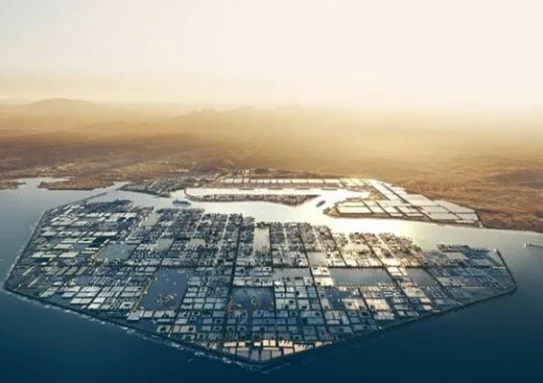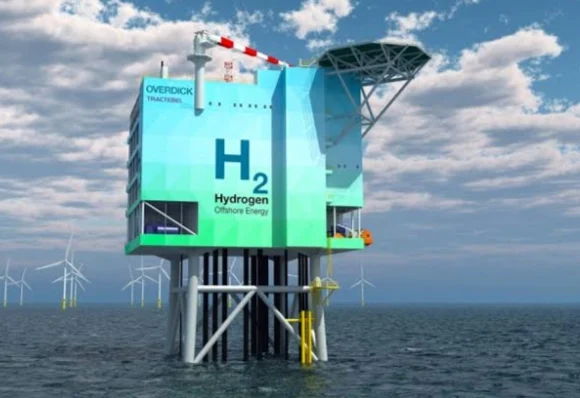The Global Boom in Going Green: Hydrogen Projects Take Center Stage
The fight against climate change demands creative solutions, and green hydrogen, produced using renewable energy sources, has emerged as a promising contender.
Unlike "blue hydrogen" derived from natural gas, green hydrogen boasts zero carbon emissions, making it a clean fuel alternative for various sectors.
Fueled by growing environmental concerns and ambitious net-zero targets, green hydrogen projects are sprouting across the globe. This article delves into this exciting trend, exploring some of the most significant ventures and their potential impact.
Mega-Projects Leading the Charge in Green Hydrogen
Here's a table summarizing some of the most notable green hydrogen mega-projects currently underway or planned around the world:
| Project Name | Location | Key Features |
|---|---|---|
| Neom Green Hydrogen Project | Saudi Arabia | World's largest green hydrogen project, aiming to produce 5 million tons per year. |
| Hy24 | Europe | Global partnership focused on developing large-scale green hydrogen projects in various regions. |
| Green Hydrogen Hub | Australia | A proposed hub for green hydrogen production and export. |
| Hydrogen Australia | Australia | Government-backed initiative to develop a green hydrogen industry. |
| Green Hydrogen Hub | Chile | A project to produce green hydrogen for export to global markets. |
| Green Hydrogen Hub | South Africa | A proposed hub for green hydrogen production, focusing on industrial applications. |
| Green Hydrogen Hub | India | A project to develop a green hydrogen ecosystem in India. |
| Green Hydrogen Hub | China | Multiple green hydrogen projects are underway in various regions of China. |
| Green Hydrogen Hub | United States | Several green hydrogen projects are being developed in different states, including Texas, California, and the Midwest. |
Note: This is not an exhaustive list, and new projects are emerging regularly. The green hydrogen industry is rapidly evolving, and these mega-projects are playing a crucial role in shaping its future.
Mega-Projects Leading the Charge:
- NEOM Green Hydrogen Project (Saudi Arabia): This colossal undertaking aims to produce 1.6 million tons of green hydrogen annually, powered by 4 GW of solar and wind energy. It positions Saudi Arabia as a major player in the clean energy transition.
- Sinopec's Ordos Green Hydrogen Project (China): This project, with a planned capacity of 260,000 tons per year, leverages solar power to generate green hydrogen for industrial applications, demonstrating China's commitment to decarbonization.
- Western Green Energy Hub (Australia): This ambitious hub targets 15 GW of renewable energy generation, destined for green hydrogen production and export. It showcases Australia's potential to be a significant green hydrogen supplier.
Diving Deeper into Green Hydrogen Project Technologies
Here's a breakdown of some key project of Green Hydrogen technologies:
Electrolysis:
- The heart of green hydrogen production, electrolysis uses electricity to split water molecules (H2O) into hydrogen (H2) and oxygen (O2). Different electrolyzer technologies are utilized:
- Alkaline Electrolysers (AEL): Mature and cost-effective, suitable for large-scale projects like NEOM Green Hydrogen.
- Polymer Electrolyte Membrane (PEM) Electrolysers: Compact and efficient, ideal for smaller-scale, distributed projects like Plug Power's.
- Solid Oxide Electrolysers (SOE): High efficiency and flexibility, able to utilize waste heat, but currently have higher costs.
Renewable Energy Integration:
- Green hydrogen projects rely on clean energy sources like solar and wind power. Projects like Western Green Energy Hub and Sinopec's Ordos project seamlessly integrate renewable energy generation with electrolysis.
Water Management:
- Projects consider water sources and treatment methods. NEOM utilizes seawater desalination, while Iberdrola focuses on sustainable freshwater sources.
Hydrogen Transportation and Storage:
- Efficient transportation and storage are crucial. NEOM leverages pipelines, while Western Green Energy Hub explores liquefied hydrogen shipping. Storage options include compressed gas and underground caverns.
Project-Specific Technologies:
- Some projects incorporate additional technologies for specific applications. For example, Iberdrola's project combines hydrogen production with ammonia synthesis for use in fertilizer production.
Technology Development and Collaboration:
- Continuous research and development are crucial for cost reduction and efficiency improvement. Collaborations like the Clean Hydrogen Alliance accelerate technology advancement.
Remember: Technology choices vary depending on project scale, location, and specific goals.
Beyond the basics:
- Explore specific project websites for detailed technology breakdowns.
- Research institutions like the Hydrogen Council and International Renewable Energy Agency offer in-depth reports on technology trends.
By understanding these diverse technologies, you can gain a deeper appreciation for the innovative solutions driving the green hydrogen revolution.
Beyond the Giants
Numerous smaller-scale projects are contributing to the green hydrogen momentum. Iberdrola, a Spanish energy company, boasts a mature portfolio of green hydrogen projects across various stages, aiming for 350,000 tons of annual production by 2030. In Finland, Plug Power is establishing green hydrogen plants to fuel public transportation. These projects, though smaller, offer valuable insights and pave the way for wider adoption.
Challenges and Opportunities:
Despite the enthusiasm, challenges remain. Cost reduction is crucial for widespread green hydrogen adoption. Additionally, infrastructure development, including hydrogen transportation and storage networks, requires significant investment. Addressing these hurdles necessitates collaboration between governments, businesses, and research institutions.
The Road Ahead:
The future of green hydrogen appears bright. The International Energy Agency predicts that this clean fuel could account for 24% of global energy demand by 2050. Continued technological advancements, cost reductions, and supportive policies can accelerate this progress. Green hydrogen projects around the world offer a glimpse into a cleaner, more sustainable future, and their success will be instrumental in achieving net-zero emissions targets.
Stay tuned for further developments in this dynamic field, as green hydrogen projects continue to shape the energy landscape and contribute to a greener tomorrow!



